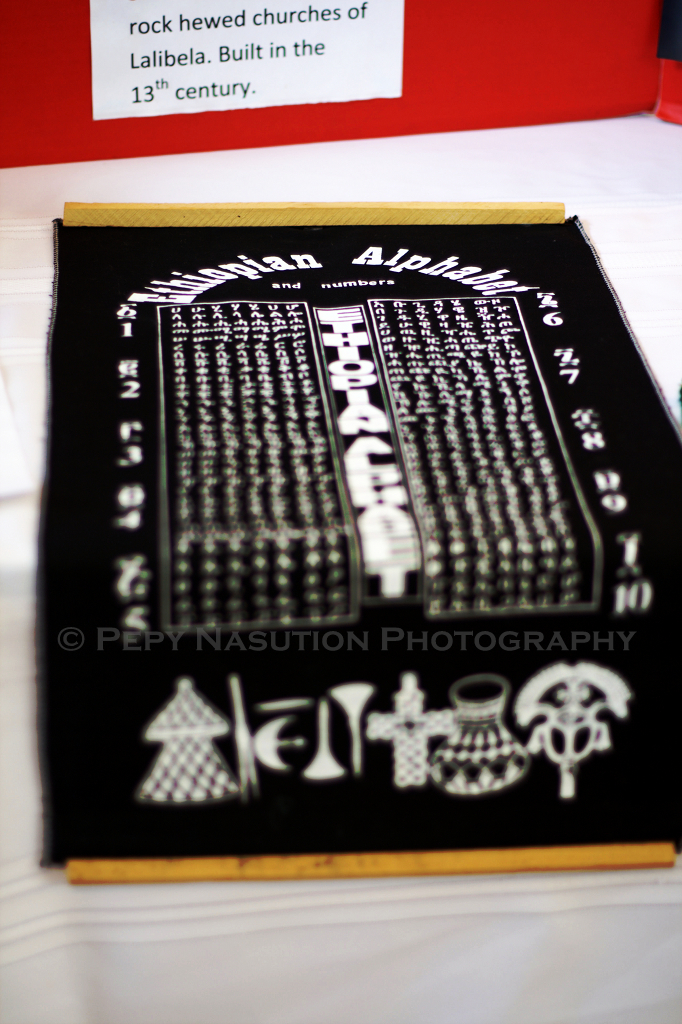
These pictures have been long overdue. Seven months ago when I still stayed in Boissevain, I was kinda craving for Ethiopian food. But, no Ethiopian restaurants in the province except in Winnipeg. Then, I read on the Brandon local newspaper that there would be the 7th Annual Lieutenant Governor's Winter Festival in Brandon. The distance between Brandon and Boissevain is about an hour driving.
The festival's concept was pretty much similar to Folklorama in Winnipeg. Just for your information, Folklorama is the largest and longest running multicultural event of its kind in the world!
Today, I just realized that I have had these pictures (make sure you see all the pictures below) when I went back to my old photo stocks on Flickr.
I was first got to know Ethiopian cuisine in 2008 when my husband and I went to the Ethiopian restaurant in our neighbourhood. Then, we felt in love with the food right away.
Traditional Ethiopian cuisine employs no pork of any kind, as most Ethiopians are either Ethiopian Orthodox Christians, Muslims or Jews, and are thus prohibited from eating pork.
Look how pretty the Massobs are! Massob/Mesob is an Ethiopian communal serving basket and made from woven grass.
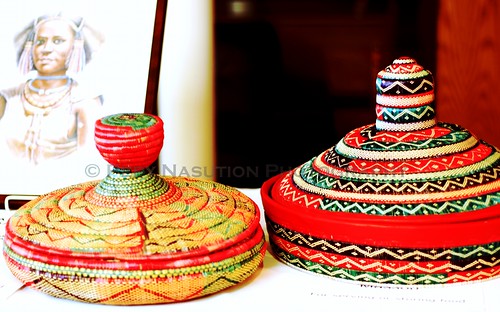
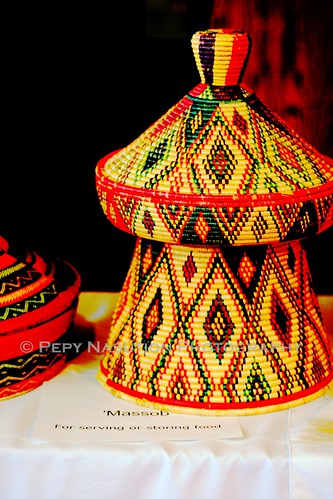 | 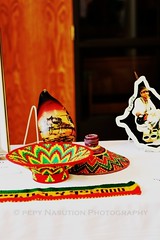 |
When I entered the room and breathed in, the aroma rang a bell right away. Smell just like dupa in Indonesian or kemenyan in Javanese. It was incense that burned inside Kirkira (sorry if I misspelled).
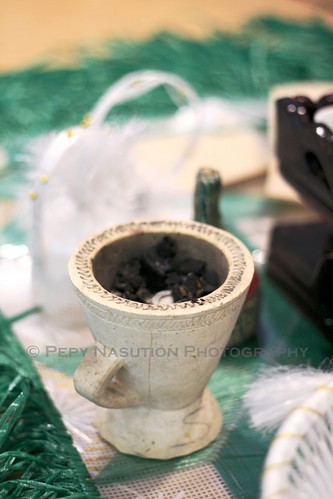
This was my portion of Injera, Wat and Tibs. Injera is an Ethiopian large sourdough flatbread, which is about 50 centimeters in diameter and made out of fermented teff flour; Wat is meat Stew, it can be chicken, lamb and/or beef; Tibs is sauteed vegetables.
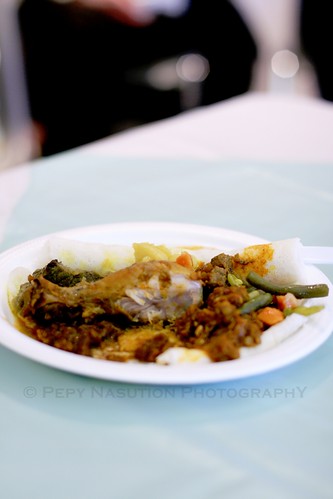
Teff flour is a gluten-free flour substitute that you can use in any of your recipes calling for all-purpose flour. It has nutty flavor and adds a pleasant sweetness to any recipe.
First time, I had a goat stew at the Ethiopian restaurant, I was stunned. It did remind me of goat curry in Indonesia. For those who love South East Asian curries, you won't have a hard time to like Ethiopian dishes.
Since I got to know Ethiopian tradition, I found similarity between Ethiopians and Indonesians. Traditionally, we eat the food with the right hand, no cutlery. Honestly, I sometimes do eat by hand at home :-P. The difference, the Ethiopians use injeera to pick up food. They also have small bowl with water and a slice of lime for washing the hand.
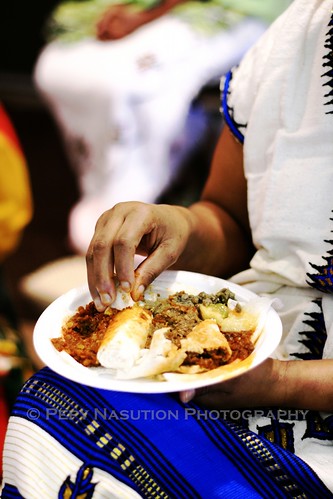 | 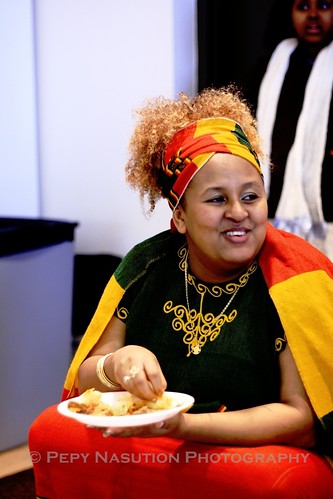 |
Stay tune for my next post, Ethiopian Coffee Ceremony.
0 comments:
Post a Comment